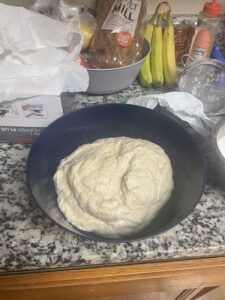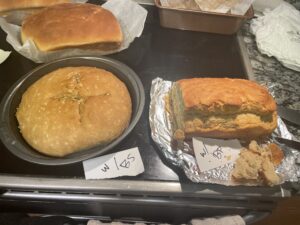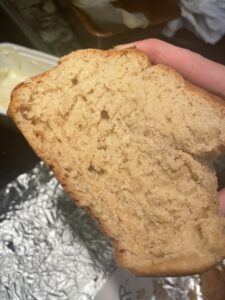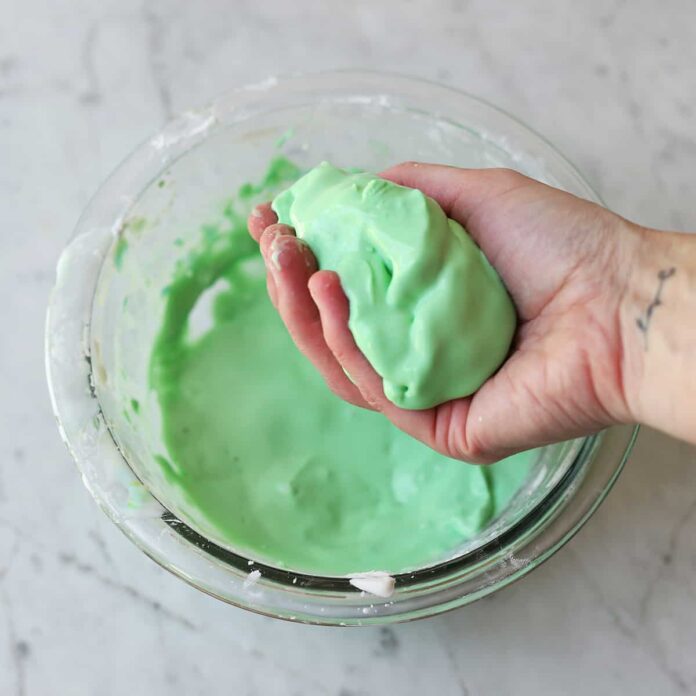Introduction
Welcome to the second installment of my Baking Science series! This time, I’m putting a variety of leavening agents to the test to see how they perform based on taste, texture, and overall look. I will be baking three loaves of bread: one using yeast, one using baking soda, and one using baking powder. I predict that the loaves of bread will all vary greatly from each other, but I am especially interested in finding how the baking soda and baking powder bread differ since a majority of the general population cannot distinguish the two.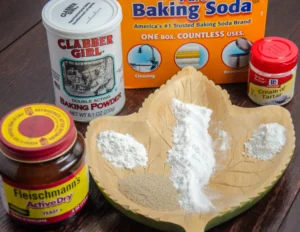
What goes into baking beautiful bread?
Most kinds of bread come together with only six ingredients: flour, oil, water/milk, a leavening agent, sugar, and salt.
What’s a leavening agent and how does it work?
The word ‘leavening’, as defined by Oxford Dictionary, is a substance used in dough or batter to make it rise, such as yeast or baking powder. Without this key ingredient, it would be impossible for the bread to rise, resulting in a flat cracker. In order to create a good ole’ sturdy loaf of bread, a couple of essential chemical reactions need to take place in the oven. The first ingredient, flour, contains two proteins called gliadin and glutenin; when combined with water, these proteins transform into gluten. The chemical makeup of gluten shows that the molecules are chained together to create long chains- this allows the bread dough to be elastic and stretchy. This is also why the longer the dough is kneaded, the more elastic it becomes. The dough’s stretchy quality is super important in achieving the end loaf because of the way the leavening agent works. The agent causes a bunch of tiny gas bubbles to form in the dough either before or while it is in the oven. Ever watched a baking competition and heard the cast talk about ‘proving’ their doughs? I know I have! The proving process involves letting your dough rest and rise before it is put in the oven to bake. This step is integral when using yeast, but not necessary for baking soda and powder since they do their work in the heat of the oven.
Experiment
Three loaves. Three agents. One winner. Just kidding, but I will include which bread I enjoyed the most at the end!
Round 1: Yeast
Recipe: https://butterwithasideofbread.com/homemade-bread/
Round 2: Baking soda
Recipe: https://sallysbakingaddiction.com/no-yeast-bread/
Round 3: Baking powder
Recipe: https://www.recipetineats.com/sandwich-bread-without-yeast-quick-easy/
Observations and Opinions
Unsurprisingly, the bread that came out the best, in my opinion, was the yeast bread. This comes as no surprise because most of the breads that are sold in stores and that people generally think of are made with yeast. It’s hard to beat lightweight, airy feel of the yeast bread crumb. The baking soda bread was also delicious, but much much denser than the yeast bread. The baking powder bread was the weirdest- it was super heavy and stodgy and just not good. That might have been due to my error though, I may have overmixed it or kneaded it too much. The baking powder bread was so tough I didn’t want to cut a slice and eat it.
Final Thoughts
My favorite bread of the three was the yeast bread! The other breads honestly did not stand a chance against the tried and true yeast bread and I now know that I do not care for soda bread much. I would advise against making bread with baking powder, it was so hard for me to get it right but maybe some practice could improve it. Overall, it was super fun to test out these leavening agents and see them in their rising action.
